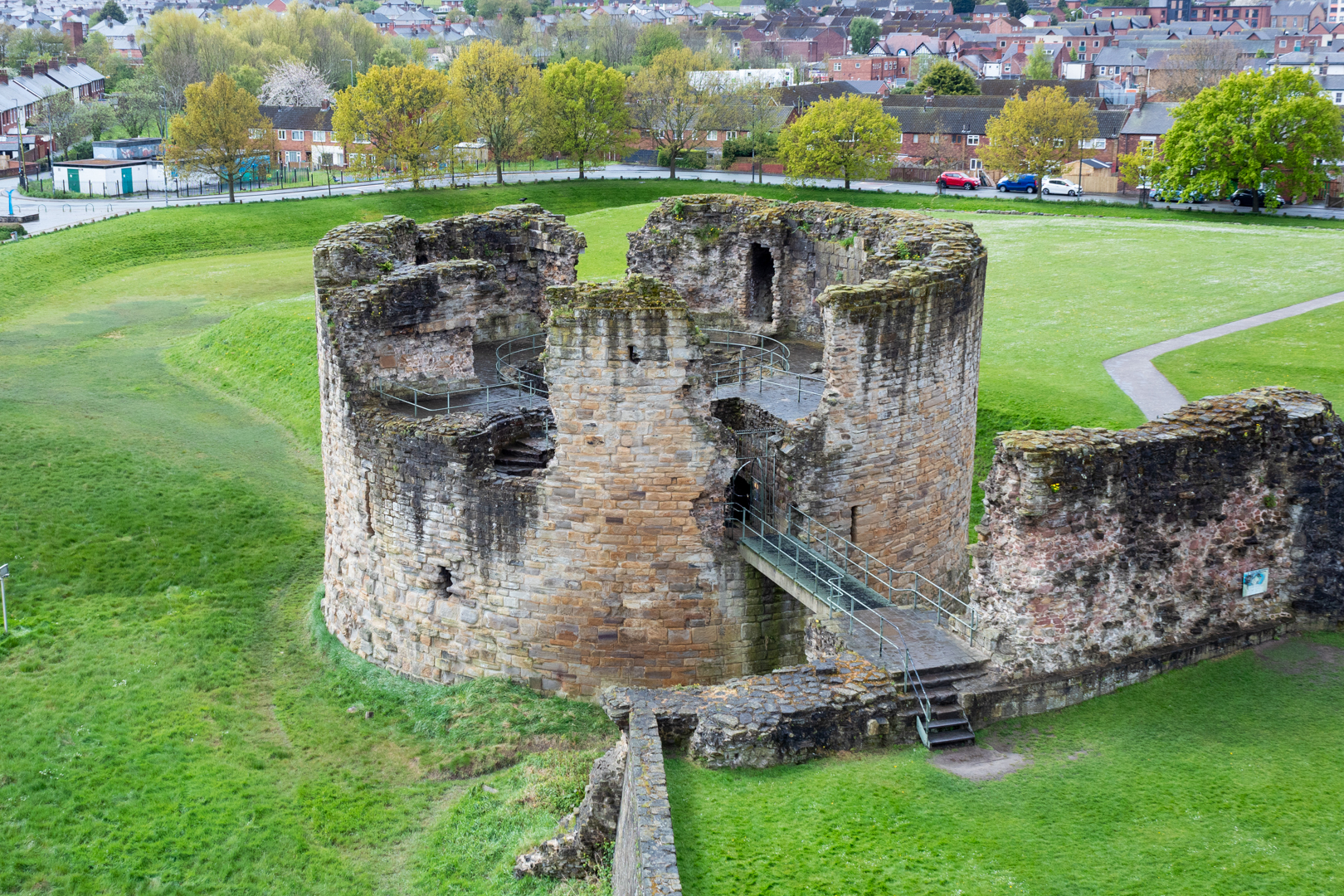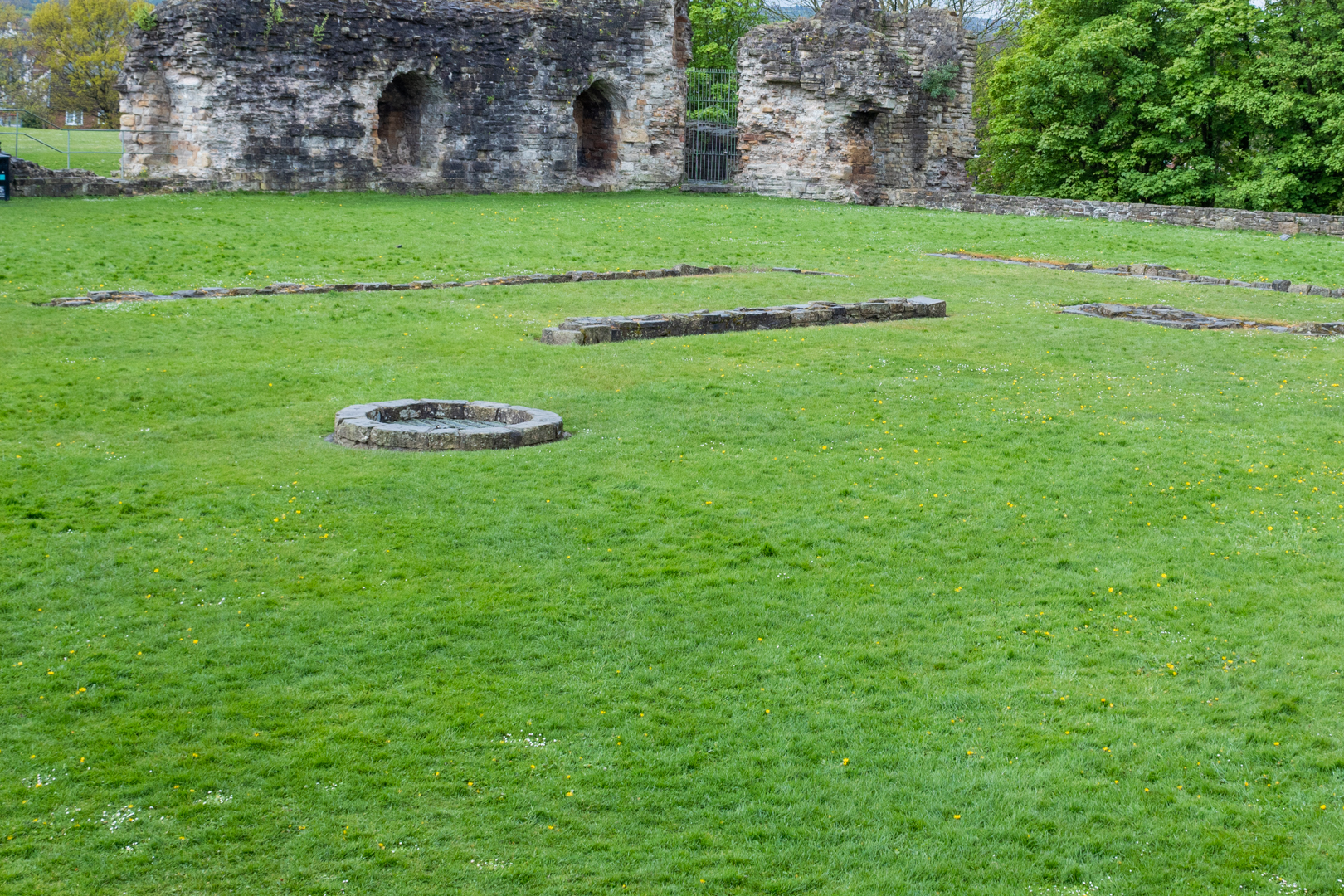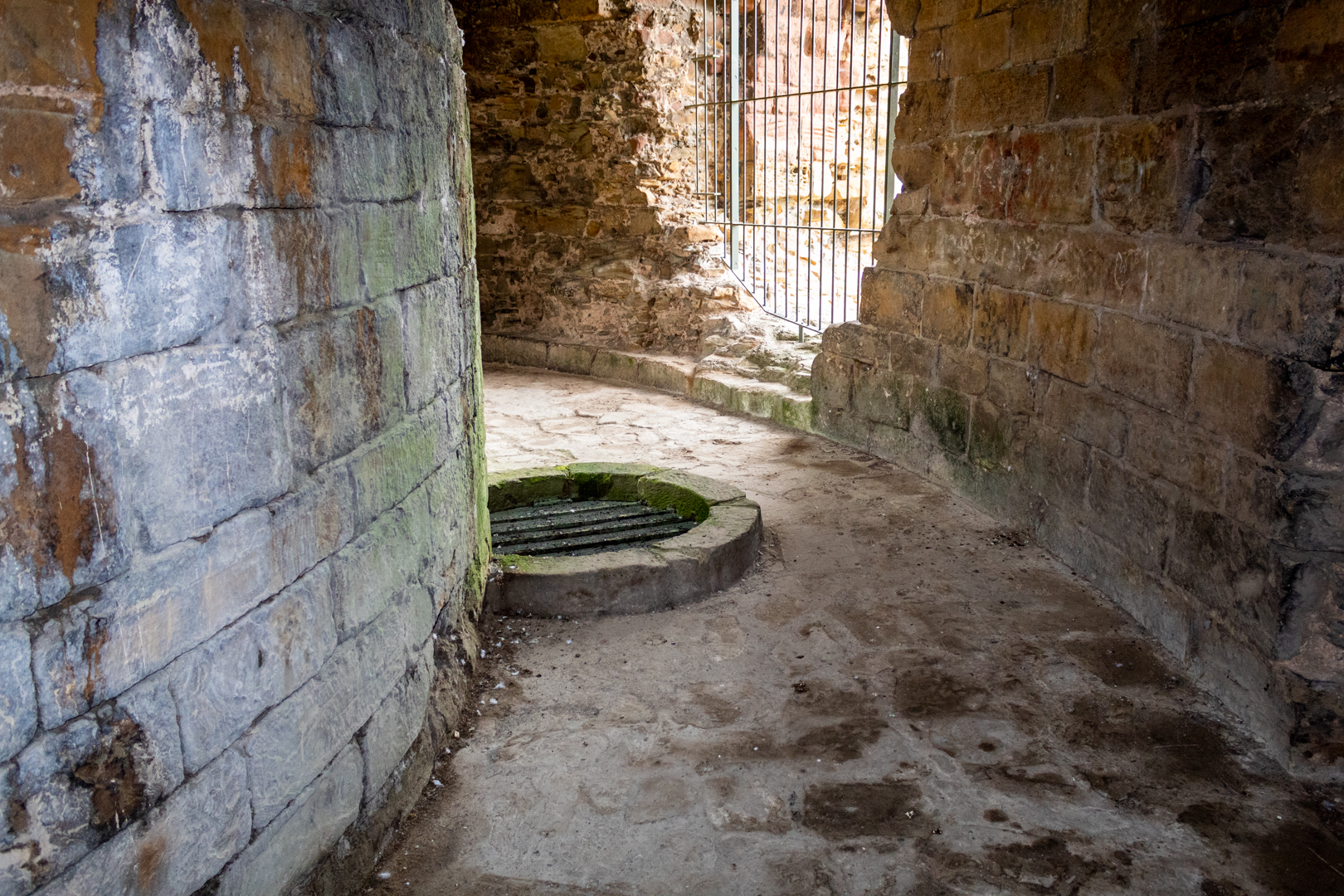Started in 1277 Flint castle is the earliest and most unusual of Wales’ English-built castles
Flint was the first castle to be constructed as part of Edward I campaign
against Llywelyn ap Gruffydd in north Wales.
Visit Date April 2024
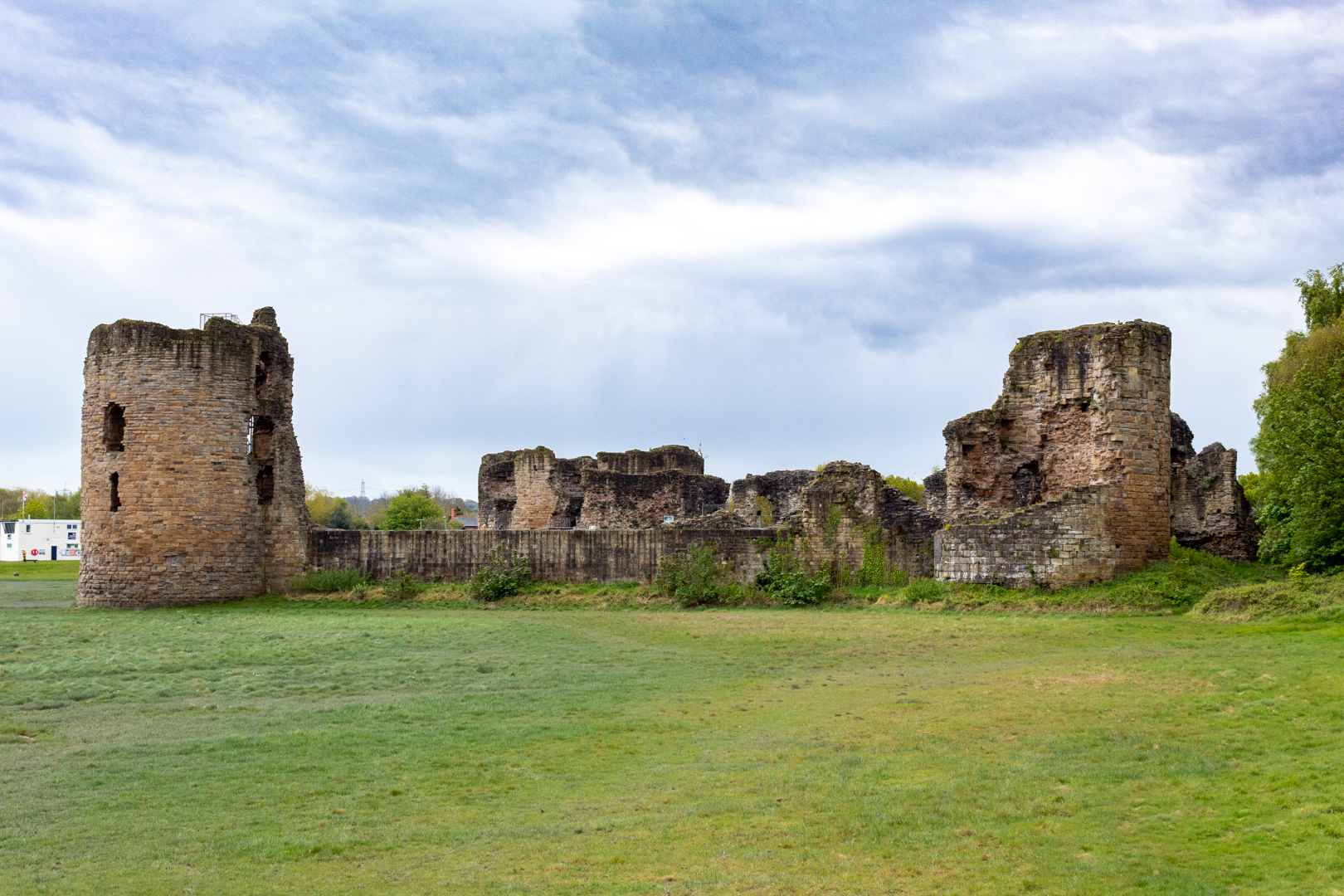 |
| Flint Castle from the river Dee |
Edward I (also known as Edward Longshanks was King of England from 1272 to 1307) took great care in choosing the location. Flint's low-lying position may seem odd for a fortification, but Edward identified the importance of the location which ensured access by sea as well as by land.
 |
| The Northwest Tower |
Edward I needed quickly to strengthen his rule in Wales and set about his programme of castle building. Flint was his first and was seen as the gateway to Wales with its position being only a day's march from Chester on the east and a further days march to another planned castle at Rhuddlan in the west.
It started what was to become Edward I's "Iron Ring". A chain of fortresses designed to encircle North Wales and oppress the Welsh.
Speed was important in the building of the castle and indeed also regarding the fortified town. Perhaps this accounts for the simple design of the castle. Workers were brought from England to build the castle and soon the initial workforce of 970 diggers, 300 carpenters and 200 stonemasons, grew to 2300 very quickly. Incentives were given to workers in the bonuses paid, ‘by the King’s gift’ to those workers who excelled, and deductions for those whose work was deemed tardy or substandard.
The castle is based on a square plan with a detached keep. The inner bailey has round towers on each side, with one of the towers detached and this being the most striking Great Tower or Donjon.
This design was new for Britain at the time however influences can be seen based on Savoyard models used in France and Edward likely saw this design during his 1270 route to the Crusades or perhaps just as likely his master mason James of Saint George would have been influenced by Jean Mesot when they worked together in Savoy, France.
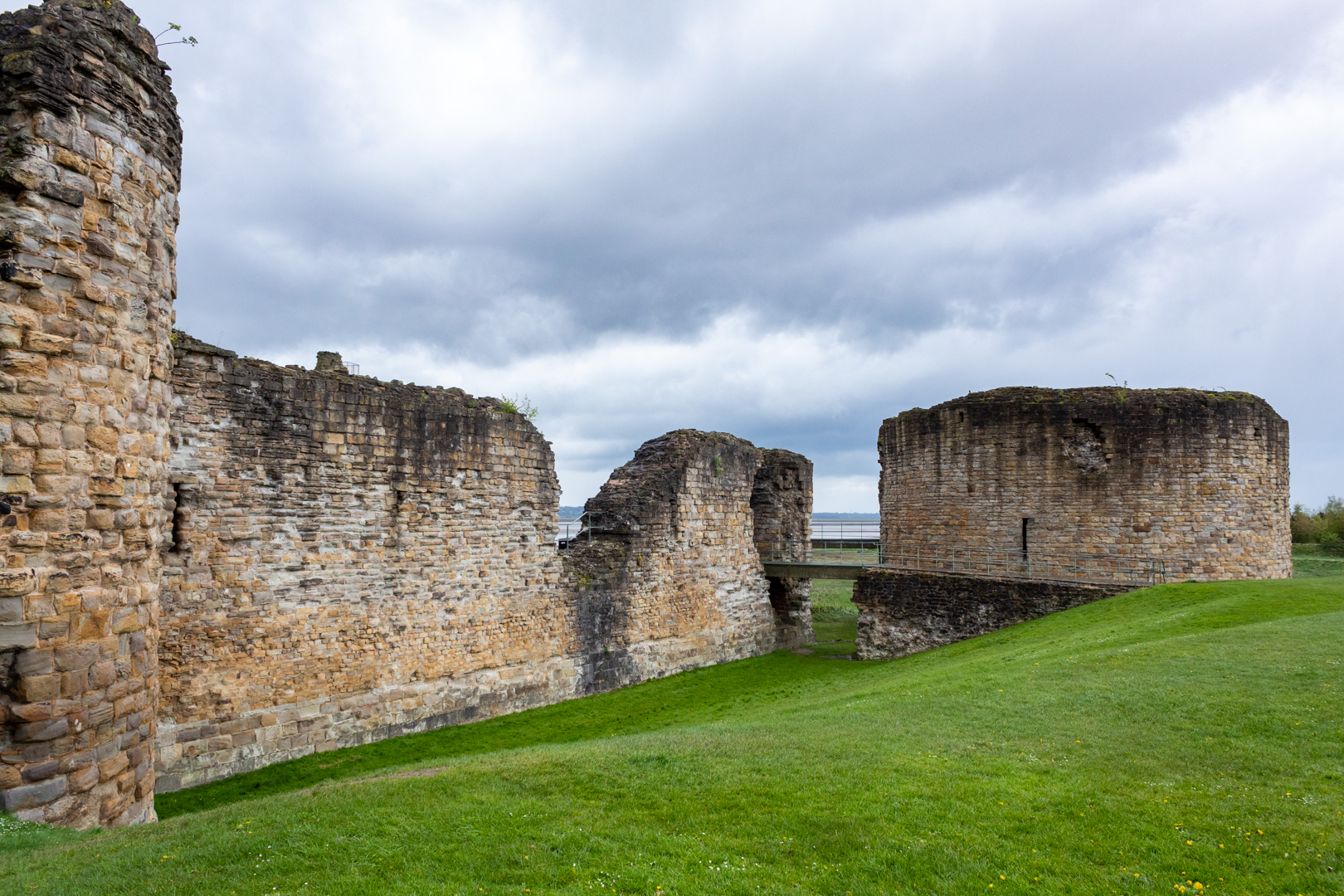 |
| Entrance to inner bailey from outer bailey |
The outer bailey, most of which is now gone would have been the main entrance into the castle complex. The entrance into the main inner bailey area would have been over a large wooden drawbridge with a portcullis.
Much of this is gone now with the modern-day entrance being insignificant compared to the large, impressive structure it once was.
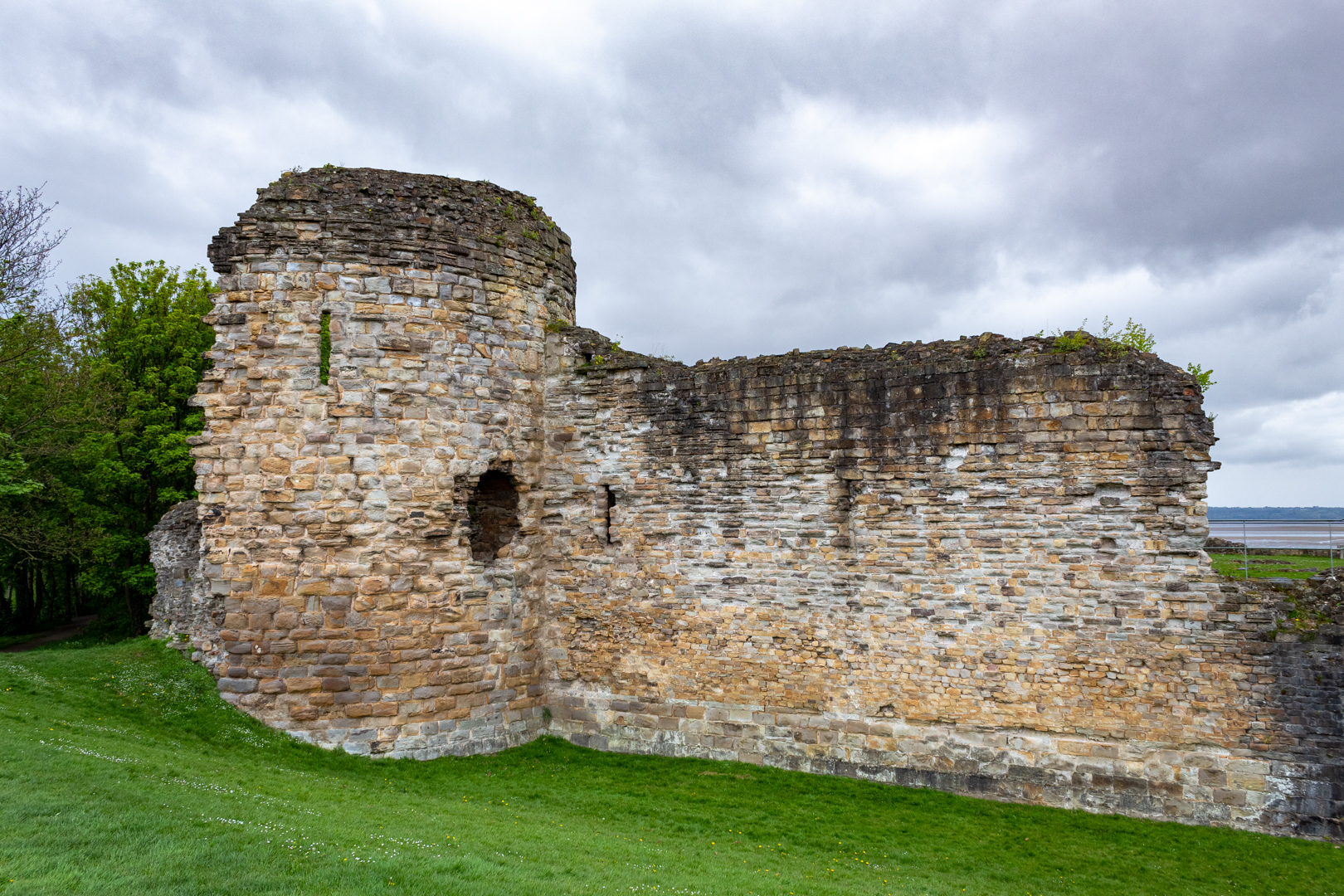 |
| The Southwest Tower (Ditch filled in) |
The ditch that it would have spanned would have been 20 feet deep and it would have been part of the moat defence for this part of the castle. It is important to note that it would also have been tidal with the river Dee completely isolating the inner bailey at high tide.
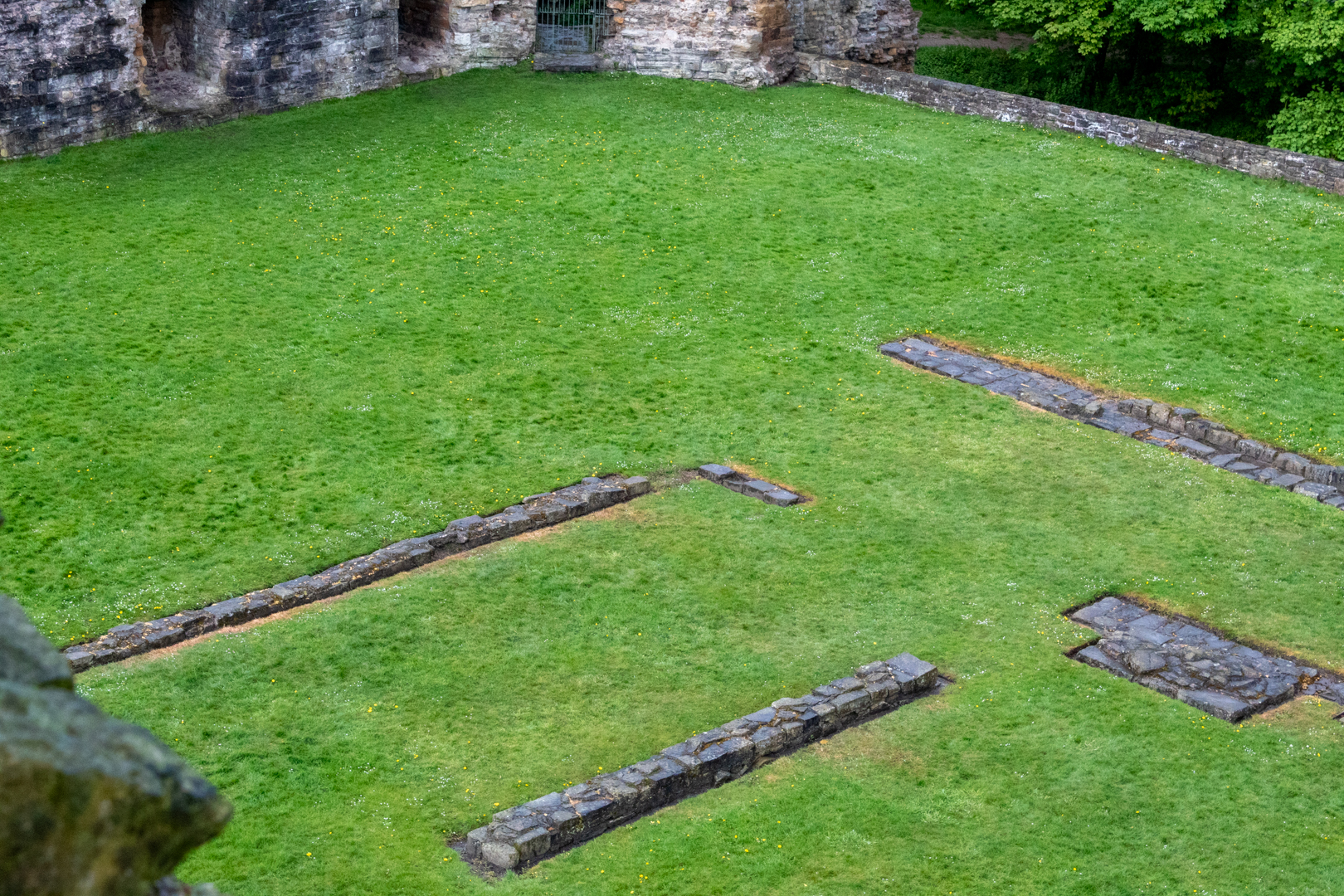 |
| Inner Courtyard |
Not much is left of the inner courtyard structures, the outlines of which can be seen along with the inner wall.
The main work buildings would have been here along with the inner bailey well.
The Great Tower, which was the main keep, would have also needed to be accessed by another wooden bridge from the inner bailey.
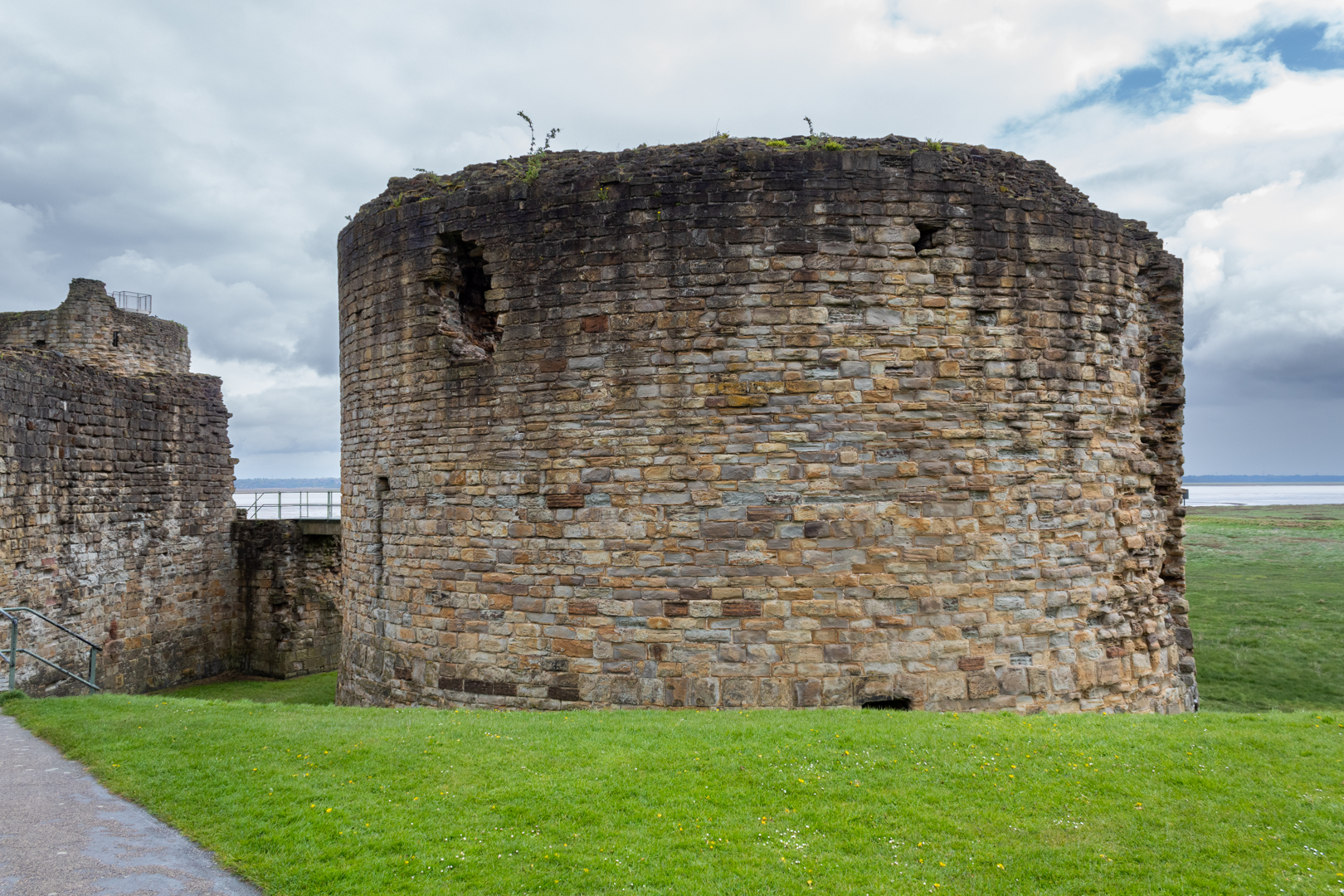 |
| The Great Tower or Donjon |
The walls were 5 metres thick and at the base would have been even thicker and there was an additional well in base of the tower.
Vertical channels in the walls with chutes to the moat were used to clear latrines from the upper floors.
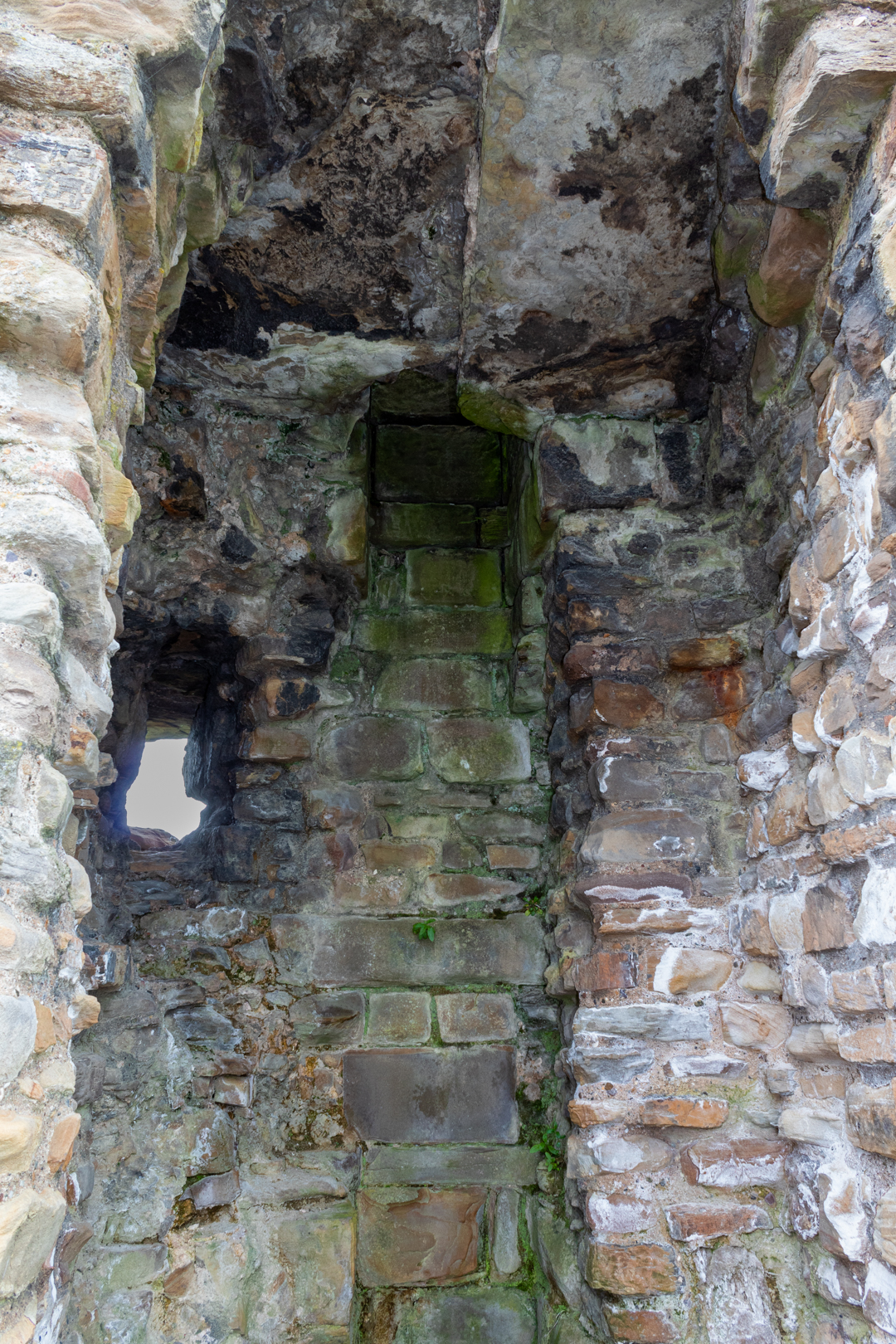 |
| Vertical latrine chutes of the Great Tower |
This part of the structure would also have included a chapel.
The remaining three towers were connected by the fortification walls.
 |
| The Southwest Tower |
These towers would have stood in addition to the wall fortifications which would have had arrow-slit holes in them unfortunately this has now all gone and the low remains of the base of the wall are all that is left to see.
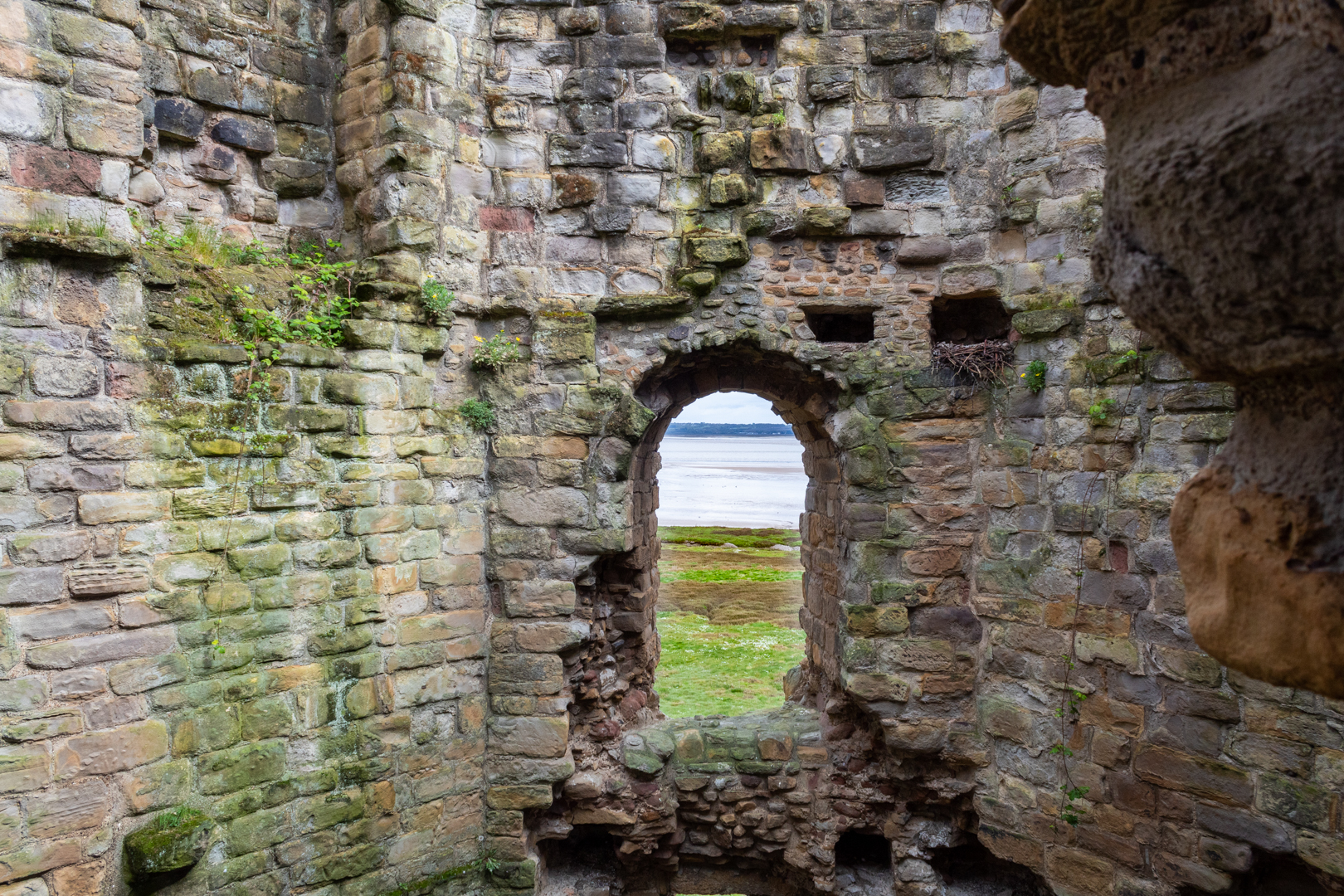 |
| Inner walls |
These towers would have had living accommodations above with combat levels with more arrow slits in the walls.
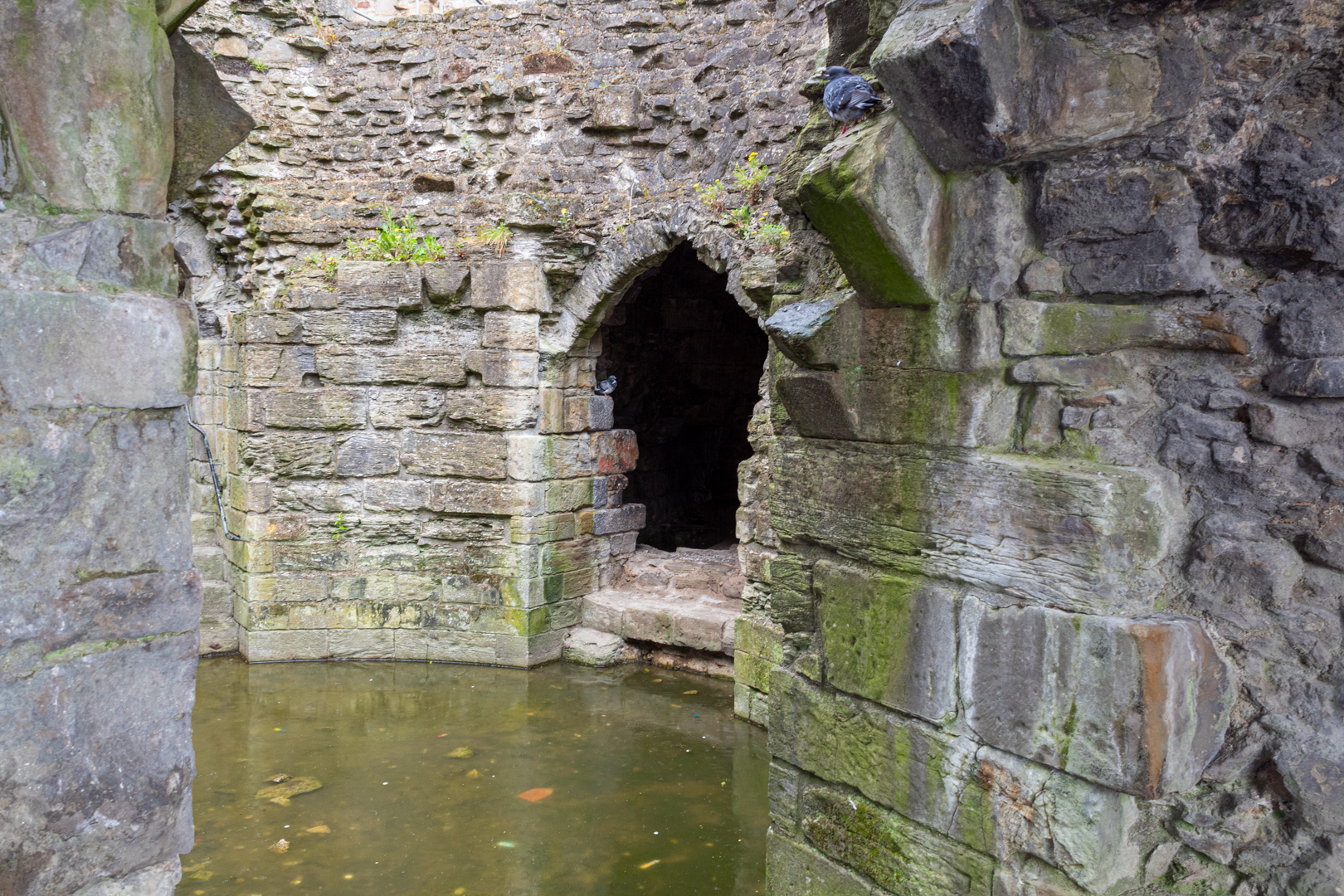 |
| Inner Walls |
Flint Castle's defining moment in history came on Palm Sunday, 1282 when Dafydd ap Gruffudd ( Prince of Wales from 11 December 1282 until his execution on 3 October 1283) launched a surprise attack. Dafydd's rebellion forced his brother, Llewelyn ap Gruffudd ( prince of Gwynedd, and later was recognised as the prince of Wales from 1258 until his death at Cilmeri in 1282), to join him against the English. The Welsh rising was easily suppressed, Llewelyn, perhaps the only man capable of dealing with the English threat, was killed later that year.
 |
| Fortification wall leading to the N/W Tower |
Then in 1294, Flint was attacked again during the revolt of Madog ap Llywelyn (leader of the Welsh revolt of 1294–95 against English rule). This time the commander of the castle, William de la Leye, was forced to set fire to much of the town to prevent it from being captured by the Welsh. The castle remained unconquered, and after the attack the town was soon rebuilt.
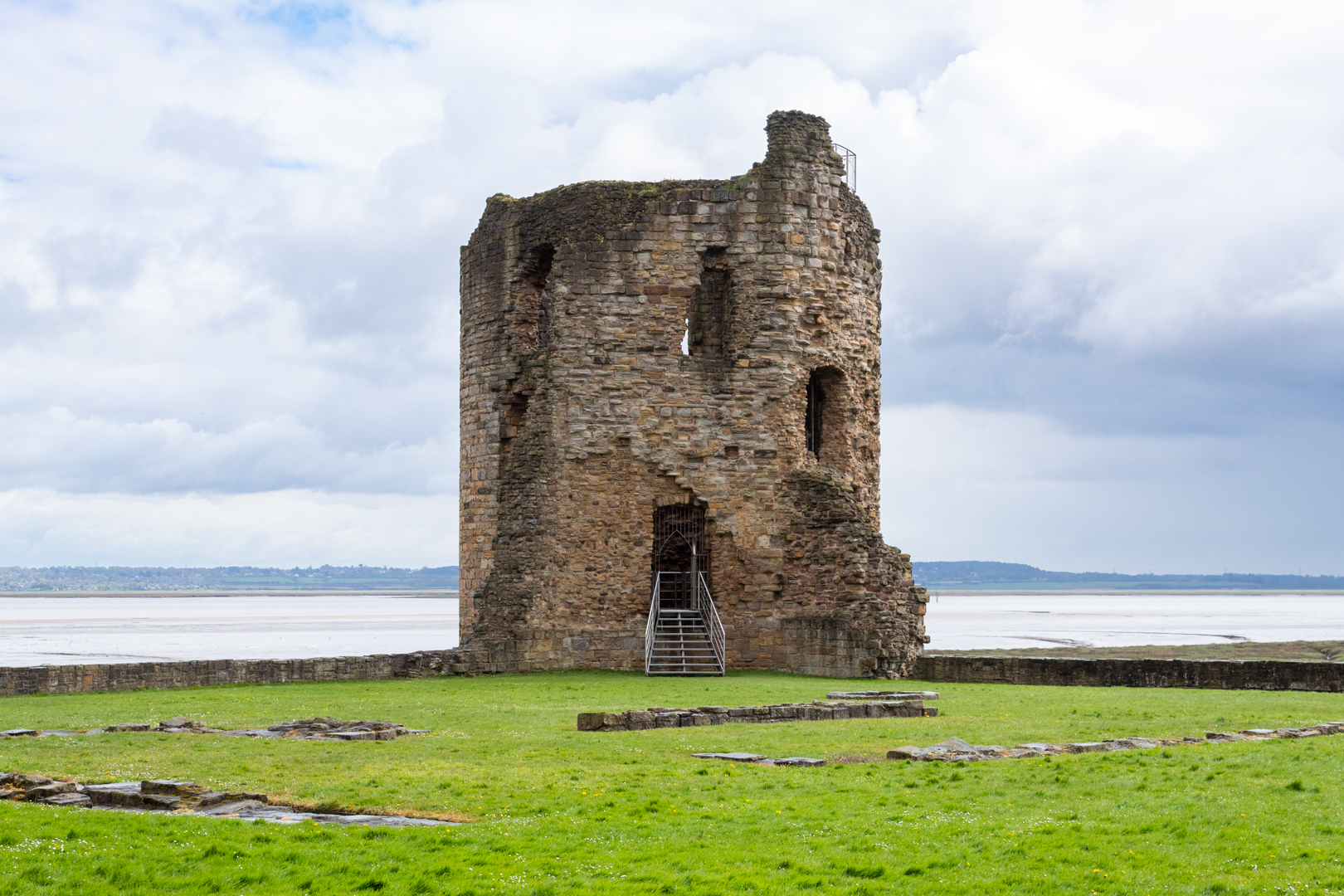 |
| The N/W Tower |
Flint Castle is also famous as the location of a fateful meeting in 1399 between Richard II and his rival to the crown Henry Bolingbroke (later Henry IV), an event immortalised in Shakespeare’s Richard II.
It was at Flint that Richard attended chapel and then climbed the great tower walls to view the arrival of Bolingbroke. Here Richard agreed to abdicate
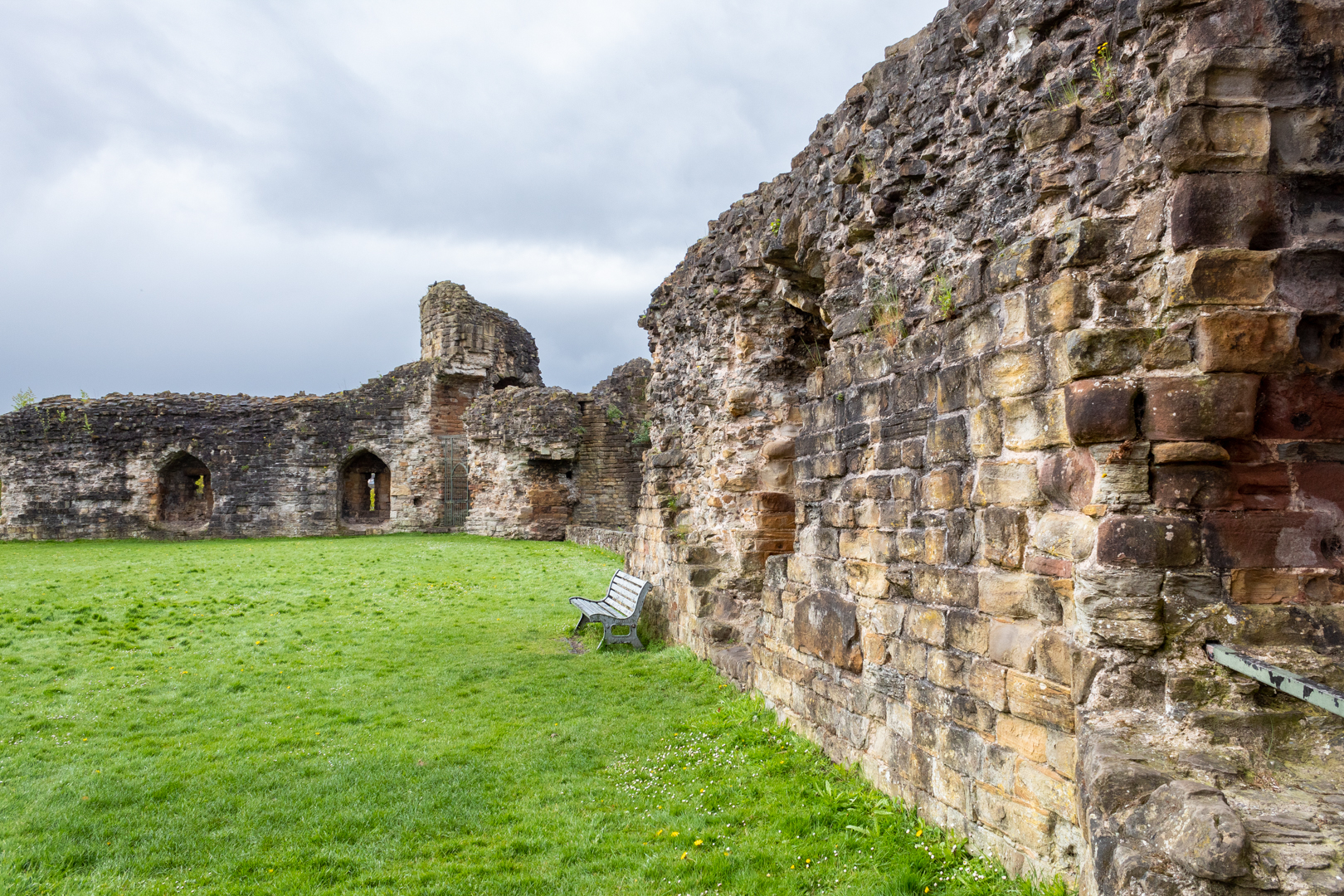 |
| Wall leading to the S/W Tower |
The castle once again confirmed its military value during the Welsh rebellion of Owain Glyndŵr (the last native-born Welshman to claim the title Prince of Wales). The invasion of 1403 destroyed only the town, while the stronghold remained unconquered until the uprising fell in 1408.
During the time of the English Civil War, Flint castle was occupied by Royalist forces, then in the years 1643-1645, it changed hands twice. Eventually, following a three-month siege, it was captured by the armies of Parliament led by General Mytton in 1647.
To prevent its re-use, the castle was destroyed on Oliver Cromwell’s order.
 |
| The uncovered entrance to the inner bailey with the great tower in the distance |
In 1784-85, parts of the castle were dismantled to make way for the construction of the county jail within the outer ward - a continuation of the castle’s traditional role within the county town. Later photographs of the jail show the approach to the building over what would have been the drawbridge to the gatehouse of the outer bailey, now mettled and flanked by a low stone wall. The jail was closed in around 1880 and became the headquarters for the 5th Battalion of the Royal Welch Fusiliers. The building was closed in 1969 and demolished in 1970, leaving no trace of its existence.
 |
| View southwards of the Great Tower |
The castle was transferred to Cadw in the 1980s.
(Cadw is the historic environment service of the Welsh Government and part of the Tourism and Culture group. Cadw works to protect historic buildings and structures, landscapes and heritage sites)
Footer:Visit Information: -
Google Reference: -
53.25173938647722, -3.129849610279812
What Three Words reference: -
///embraced.buzzer.glorified
OS Details: -
OS Grid Ref:SJ 24706 73343
Additional information.
Visiting is very easy with the site well signposted off the A458 in the town of Flint, North Wales, with a large car park (53.25189984860036, -3.1311048763469933) which is free.
Access is currently free and the site has good information boards available.
There are no facilities on site but the town of Flint has all the amenities you would expect.
A full list of blogs can be found at my website
Google Reference: -
53.25173938647722, -3.129849610279812
What Three Words reference: -
///embraced.buzzer.glorified
OS Details: -
OS Grid Ref:SJ 24706 73343
Additional information.
Visiting is very easy with the site well signposted off the A458 in the town of Flint, North Wales, with a large car park (53.25189984860036, -3.1311048763469933) which is free.
Access is currently free and the site has good information boards available.
There are no facilities on site but the town of Flint has all the amenities you would expect.
A full list of blogs can be found at my website
